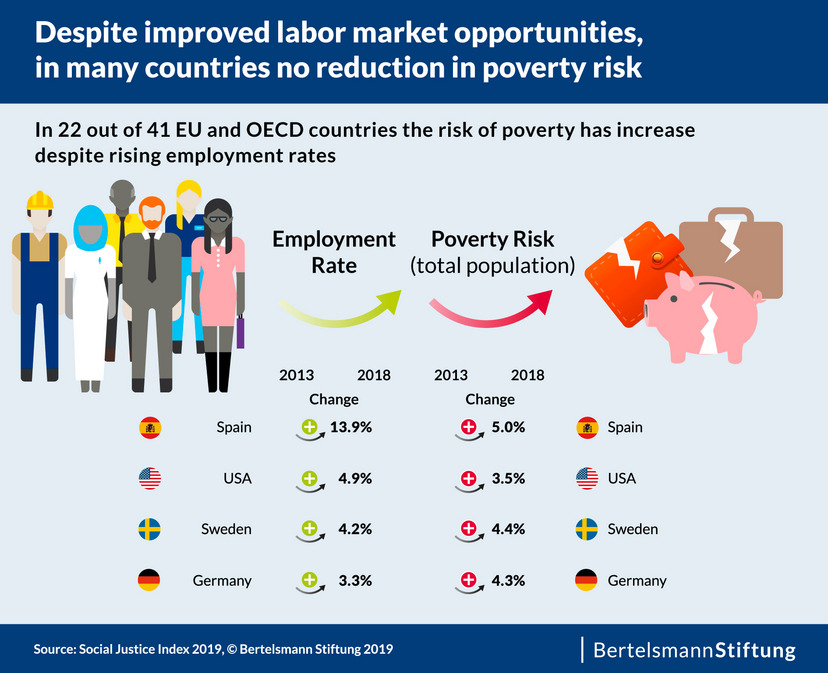Around the world, labor markets have recovered significantly in comparison with the post-2008 crisis years. About 10 years after the outbreak of the global financial crisis, the average unemployment rate across the 41 EU and OECD countries, at 5.3 percent, has for the first time fallen slightly below its pre-crisis level of 2008 (5.7 percent). However, the labor-market rally has as yet had no decisive impact on poverty prevention. In 25 of the 41 countries examined, at-risk-of-poverty rates have stagnated or even increased. Children are often more exposed to the risk of poverty than are older people. In general, too little is being done to promote justice between the generations, despite looming challenges such as global warming and demographic change.
These are the results of our current Social Justice Index, which annually examines opportunities for social participation within the 41 EU and OECD countries on the basis of comprehensive data evaluations in areas such as the labor market, poverty prevention and education.
![[Translate to English:] Viele Menschen laufen über ein graues Innenstadtpflaster. Das Foto wurde von oben aus der Vogelperspektive aufgenommen.](/fileadmin/files/_processed_/9/6/csm_1572656975iStock_000041375074_bearbSJI2017_Teaser_8a60d7c25b.jpg)




